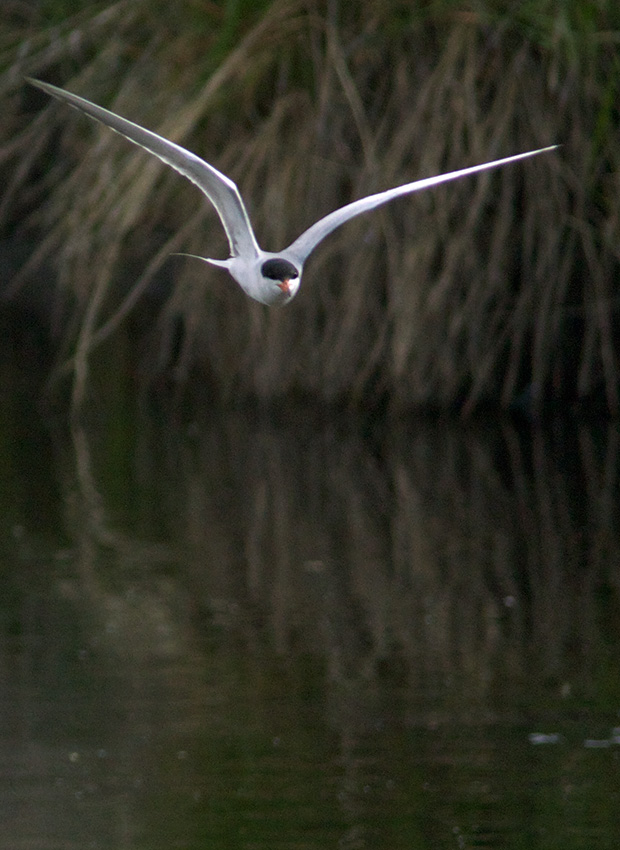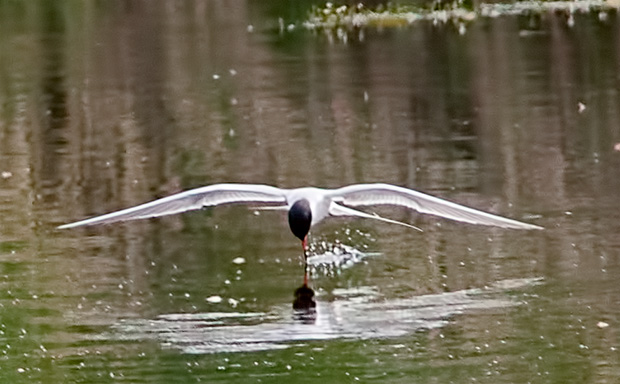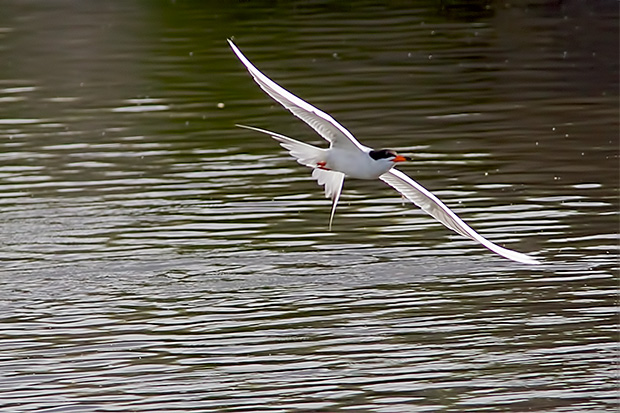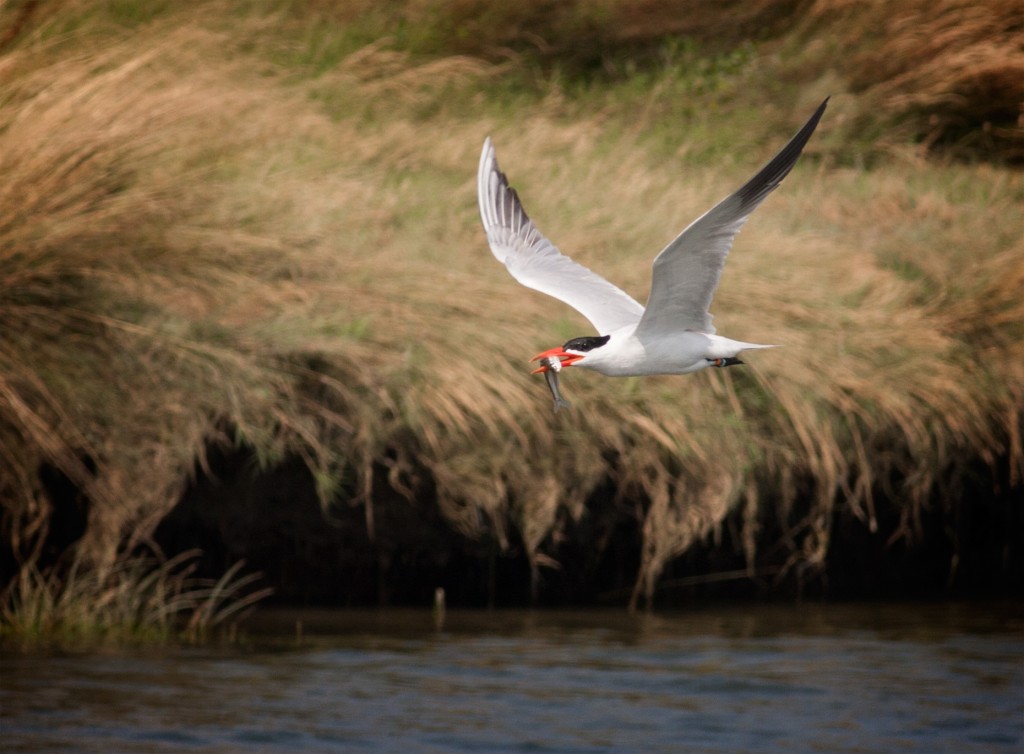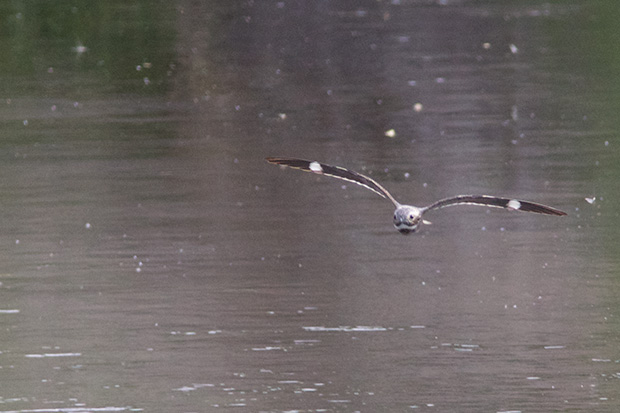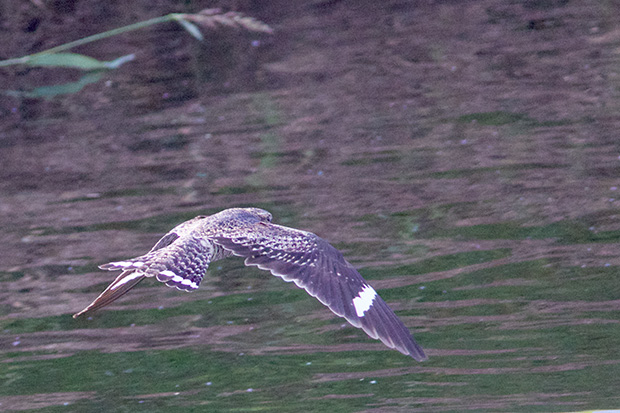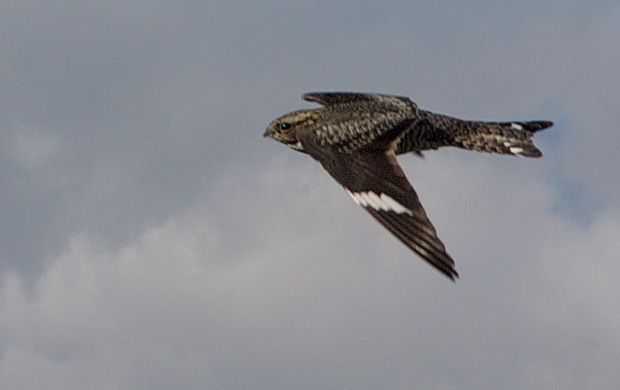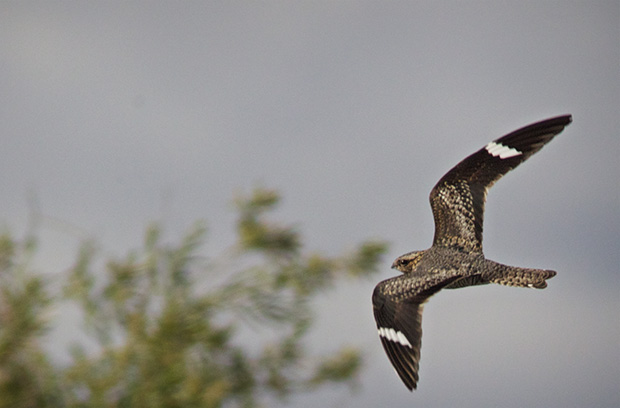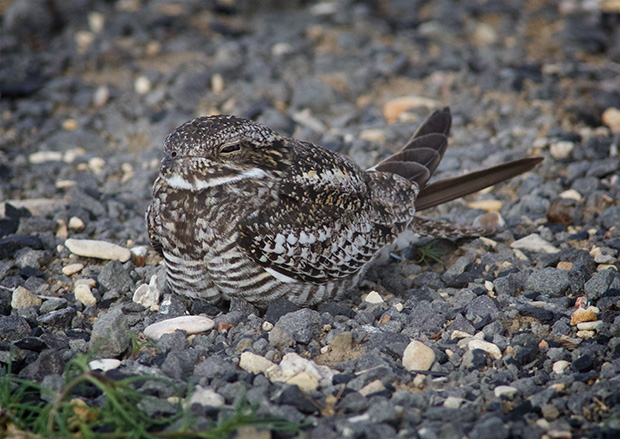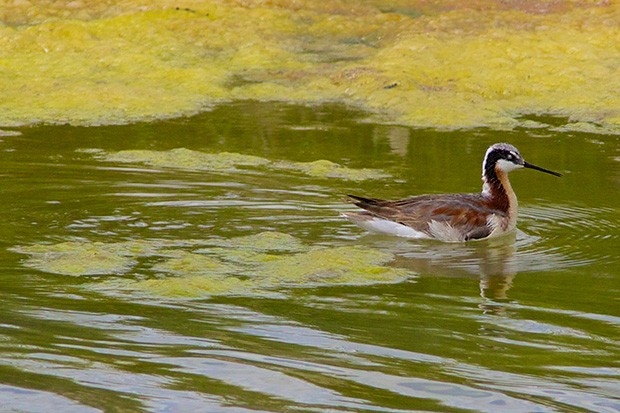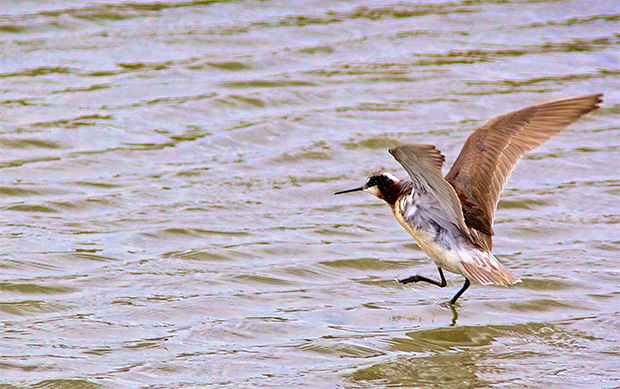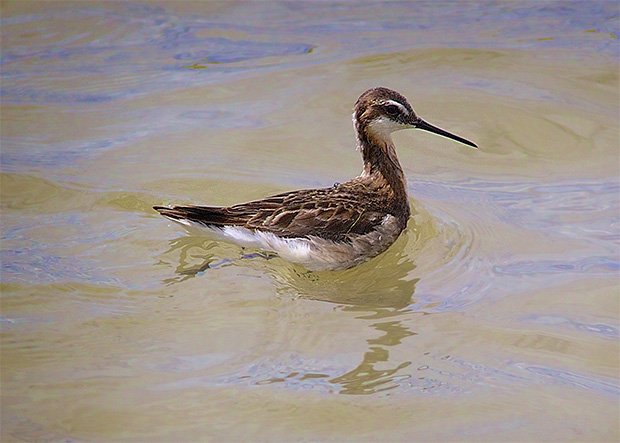I’ve only been going to Malheur Wildlife Refuge for four years, but I was shocked by how low the lake was when I went there recently, much lower than any time I’ve visited the last four years. I’ve taken some of my best shots of Grebes where Malheur lake feeds into Harney Lake. On this visit I found only a dried-up pool and a Great Blue Heron stalking the shallow waters where grebes used to raise their chick.
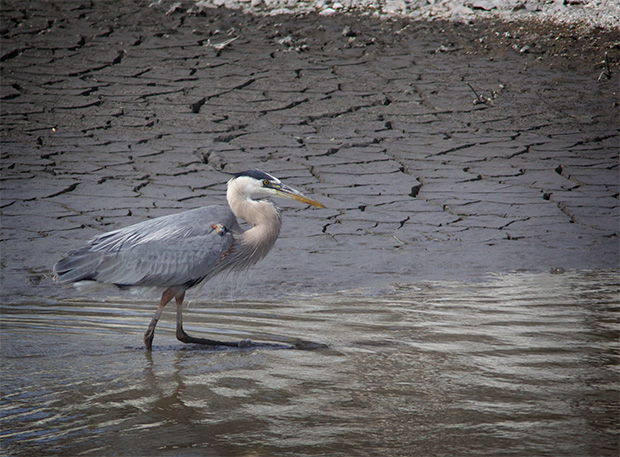
I was told that the nearby Steens Mountains only had one-third of their usual annual snowfall and the lake would likely shrink even more this summer. There was no water and no birds on Ruh-Red road unlike previous years. Considering all the talk of Western droughts and Global Warming it’s hard not to expect the worse.
Strangely enough, though, the reservation itself was as green as I have ever seen it, due largely to the greater than usual Spring/early Summer precipitation and to cool temperatures so far this summer.
In fact, the grass was so tall that I couldn’t get a single shot of a White-Faced Ibis stalking the fields, though a scared up a few as I drove down the main road.
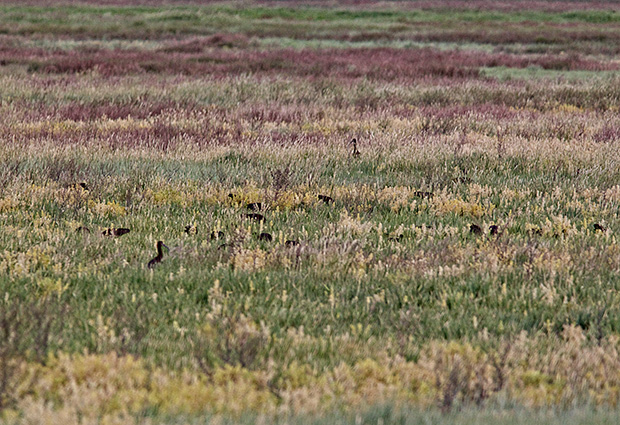
The grass was so tall in places I could barely see these two deer staring at me a few feet away from the road.
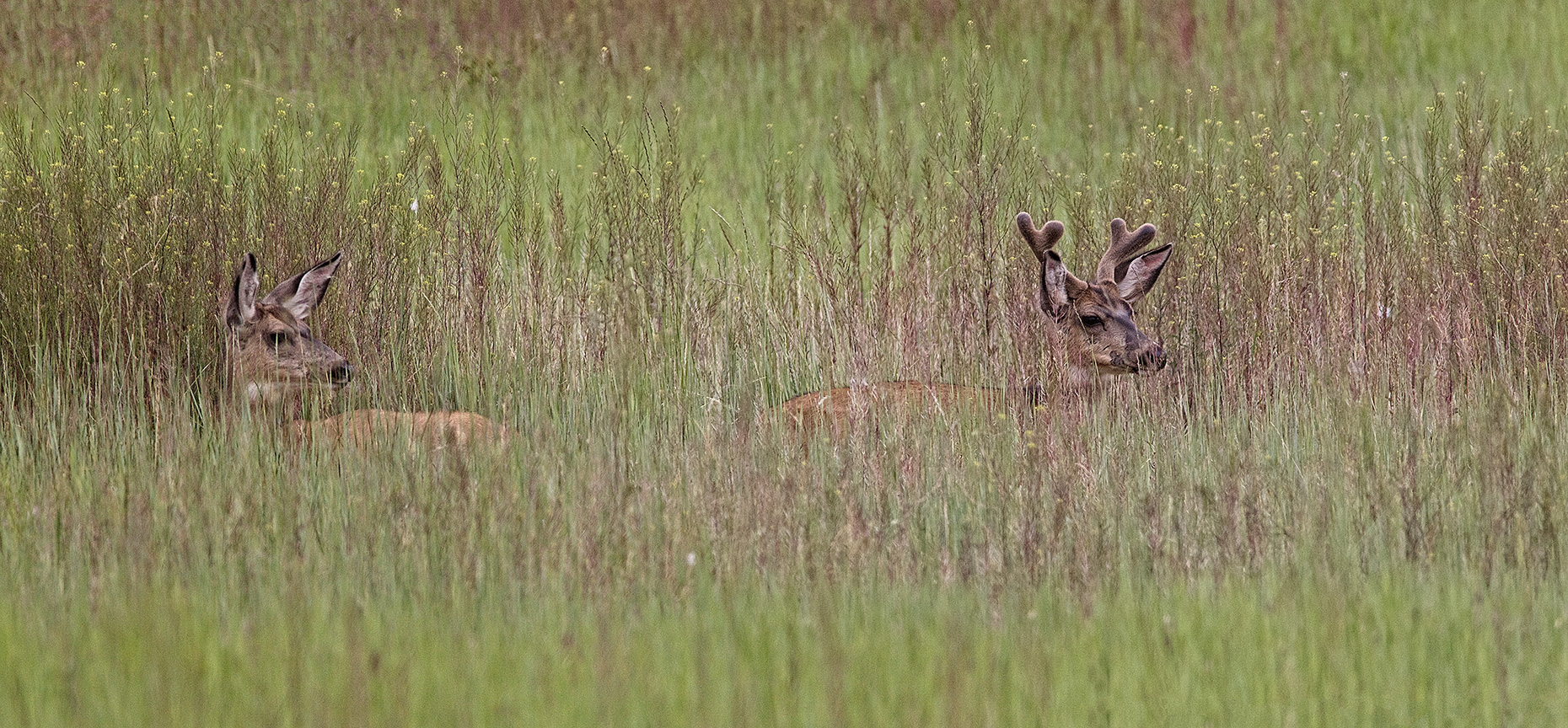
The Spring rains were heavy enough that the north end of the refuge had water in the streams and ponds unlike the previous two years, and a small colony of Yellow-Headed Blackbirds seemed to be thriving.
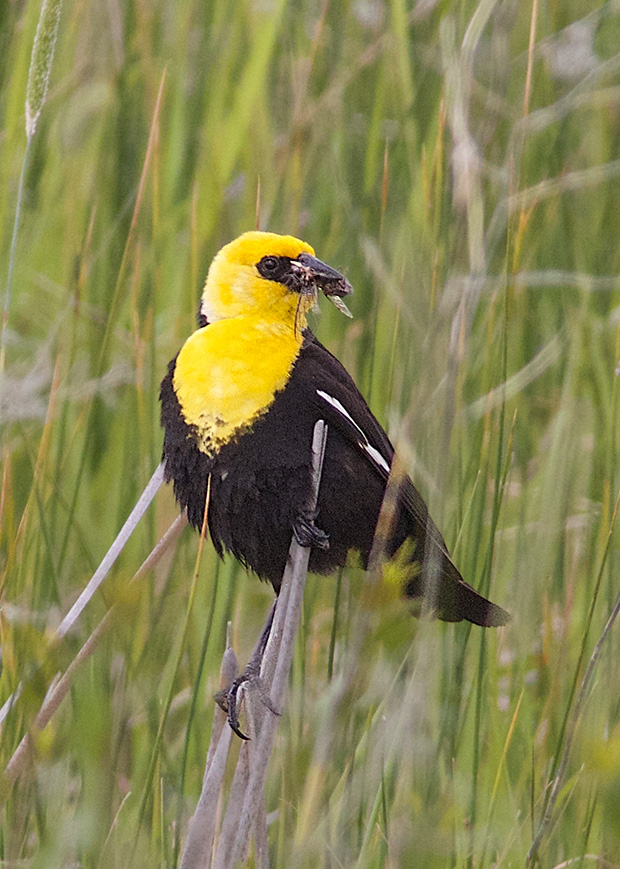
To me four straight years of decreased snowfall and widespread wildfires last year seemed like ominous signs of Global Warming affecting the refuge, but the unusually green fields would seem to give cover to those who would argue otherwise.
To complicate matters, a brief review shows droughts are historically normal for Malheur. The lake is one of the few places in the Northwest where water drains directly into a basin instead of running off into the ocean. The depth and size of the lake is directly related to the annual snowpack. As such, its size and depth is much more variable than most other lakes.
Still, considering how important this fragile habitat is to birds and the four-year-long drought we’re suffering here on the West Coast, I can’t help but worry that long-term weather patterns will play havoc with Malheur National Wildlife Refuge, even if I may not be around to see it.

